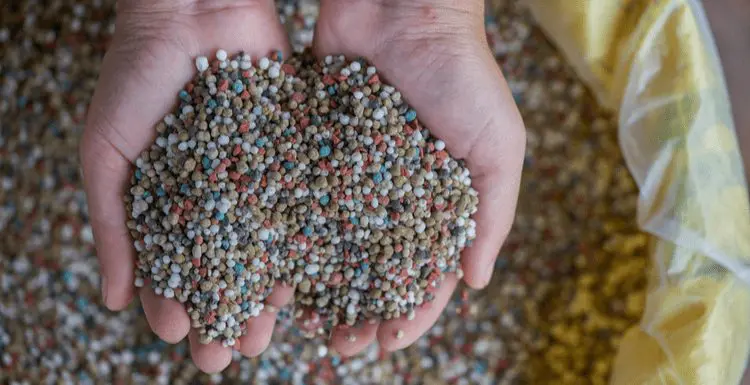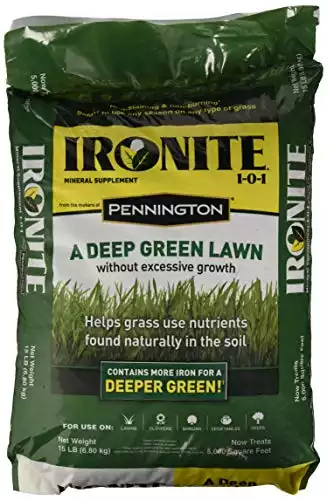There are many fertilizers that you can buy. However, one of the most effective is ironite. But what is it? And how does it work? Is it safe?
Ironite is a supplemental fertilizer used mainly to keep lawns green and fast-growing. Just like the name suggests, ironite uses a high content of iron nutrients.
If your lawn lacks iron, you’ll need to apply ironite. But how do you know if your lawn lacks iron?
By getting a soil test from an expert. In most cases, you should apply ironite during the spring season.
What Is Ironite?
The reason lawns become orange and dead-looking is because of a PH imbalance. Iron acts as a repair tool to bring this balance back to where it should be and to re-green lawns as it aids photosynthesis.
Ironite is a specific formula that brings orangish hues back to a lovely forest green.
Ironite mainly consists of:
- Nitrogen
- Urea Nitrogen
- Soluble Potash
- Calcium
- Sulfur
- Iron
Iron may be the dominant ingredient, but it also contains other micronutrients such as potassium, nitrogen, and manganese phosphate.
The other components work together with iron to produce enzymes that create vital proteins that make chlorophyll.
While most people use it on their lawns, it can also be used in gardens, for landscaping, and to give trees a much-needed nutrient boost.
Ironite should be added to lawns or gardens along with other fertilizers. No more than four times a year is suitable for using ironite with other fertilizers, as it should be used as a booster, not as a primary fertilizing tool.
Ironite For Lawns
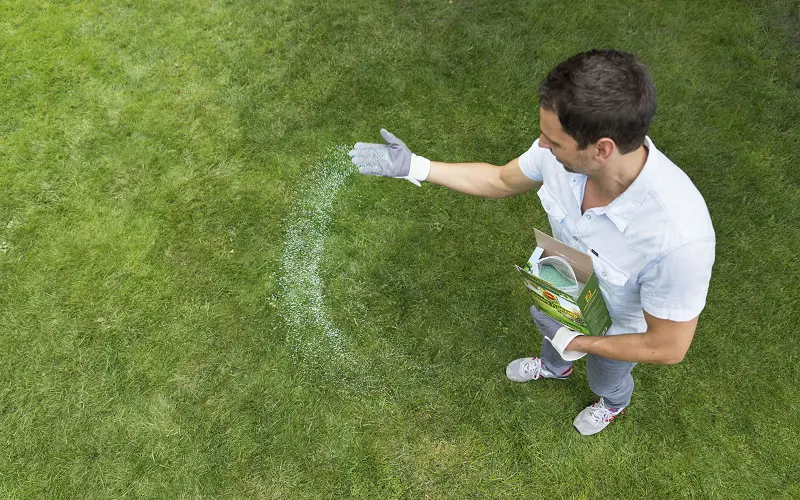
Image Source: pennington.com
Ironite is an excellent fertilizer that you can use on your lawn, not just in your garden, and on specific plants.
It contains vital nutrients, including iron, that allow your lawn and plants to thrive. By using ironite in your yard, you’ll likely see an improvement in the color, making it look more appealing and increasing curb appeal.
While you can, and many people do, use ironite on their lawns, it’s important to remember that you shouldn’t overuse it.
Using it too often or too much at a time can have the opposite of its intended effect. It can cause discoloration on your lawn and even cause it to die quicker.
When To Apply Ironite To Lawns
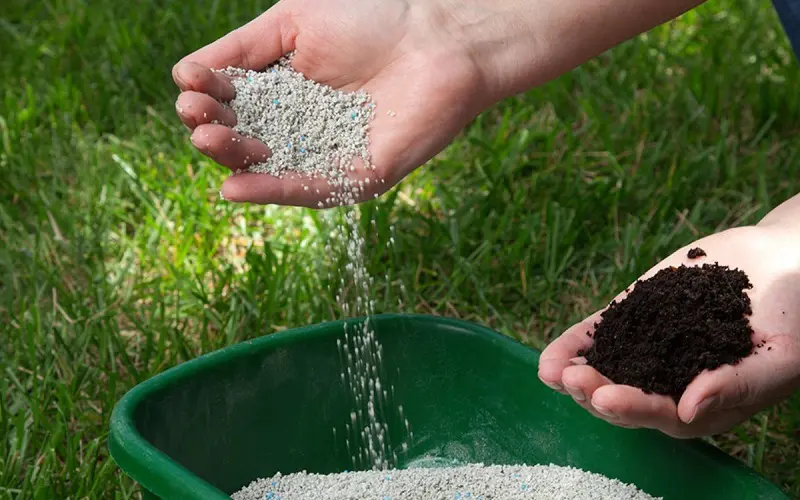
Image Source: naturallist.com
If you’re considering using ironite on your lawn, knowing when to use it should help provide you with the best benefits.
The best time to apply ironite to your lawn will depend on where you live and your climate, but generally, you’ll want to use it in early spring or fall.
The goal when applying ironite is to apply it when your grass is actively growing, not when it’s dormant or already dying.
Depending on the temperatures where you live, you’ll want to avoid applying this fertilizer in the summer because adding ironite can cause your lawn to die if it’s too hot.
Besides the time of year, you’ll want to apply the ironite to your lawn after you’ve thoroughly watered it, the sprinklers ran, or it rained. A moisture-rich yard will allow the grass to absorb the fertilizer faster and better.
As always, be sure to follow the instructions listed on the packaging of the ironite you purchase to ensure you’re doing it safely and correctly.
How to Apply Ironite?
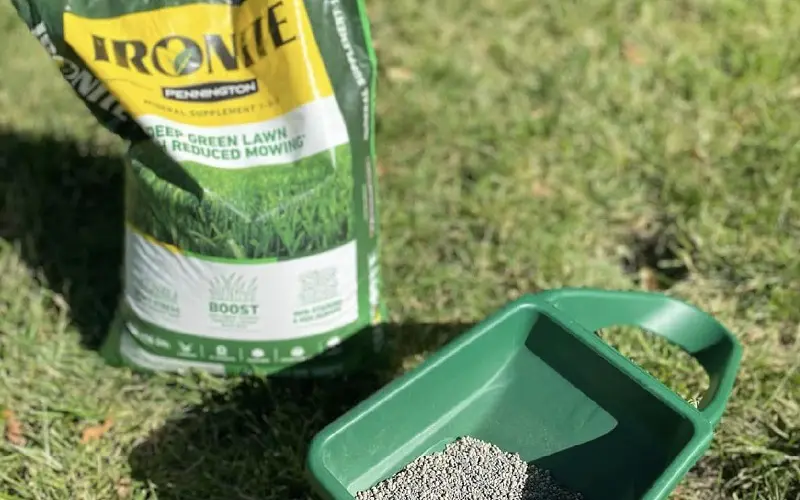
Image Source: naturallist.com
Measure your lawn or garden area, and make sure to wear protective boots and gloves before using the product.
Most ironite instructions require one ounce of liquid per 100 square feet. For granular ironite, measure ⅓ of a pound per 100 square feet.
With liquid, you can spray it in a spray bottle or pour it from a gardening bucket. With granular ironite, you can spread the granules with your hands or sprinkle them around the area you need.
Types of Ironite
While ironite is excellent for lawns and plants, there are two types of ironite to use: organic and synthetic.
Organic
Organic ironite is produced from organic resources and releases nutrients into your garden slowly, but the plant will absorb the iron rapidly. With organic ironite, the resources are mainly greensand and milorganite.
Organic ironite has more benefits because it won’t stain concrete, and due to its slow-releasing components, it won’t turn your lawn grey.
Synthetic
Synthetic ironite is factory-made and has fast-releasing components in it, so you’ll see instant results. Although synthetic ironite is instantaneous, there’s a higher chance your lawn will turn grey.
In addition to organic and synthetic ironite, it also comes in two textures: granular and liquid.
Granular
Granular ironite comes in the form of tiny granules that you can take in your hand and sprinkle over your garden or lawn. Think of this as the traditional fertilizer often found on sidewalks in the spring.
After depositing these granules, you need to water the area so that the ironite can adhere to the soil (a process called “watering in”). Granule ironite works best for loam or clay lawns and gardens.
Liquid
Liquid ironite works best for sandy or loose soils. The handy thing about liquid ironite is that you can add it to a spray bottle and use it in the garden.
The liquid version also helps the blades of grass absorb the supplement. If you’re looking for fast results, liquid ironite is your best shot for rapid improvement.
Using Ironite
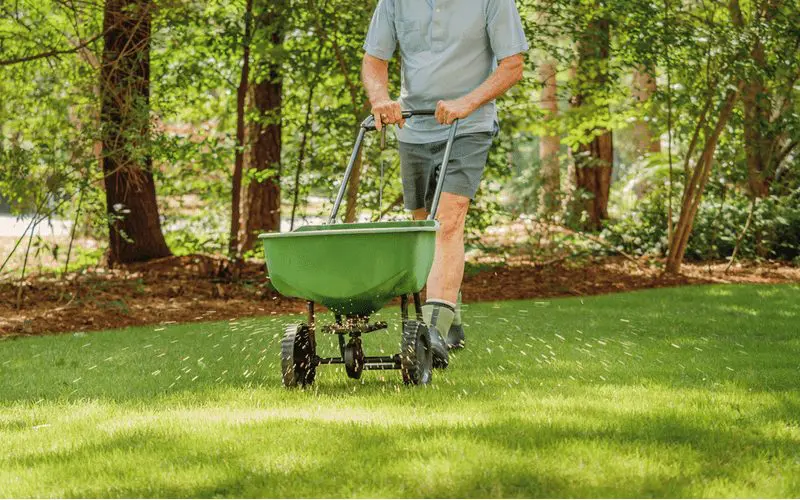
The Toidi/Shutterstock
There are many benefits to using ironite. However, like most items, it also has disadvantages.
Pros
- Adaptable. Ironite is great for many things, including vegetables, flowers, trees, and any outdoor or indoor plants.
- Less watering. Based on the balance of nutrients in ironite, your lawn or gardens don’t need to be watered as much.
- Works with any soil and ground type. When it comes to a general area where you’re placing fertilizer, a lawn professional must come in to instruct you; this is not the case with ironite.
- Equal balance of ingredients, so the soil doesn’t become overfed. The reason for grass burns is because there is too much nitrogen in the ingredients of most fertilizers. Rather than a ton of nitrogen, ironite uses iron and other micronutrients to prevent this from happening.
Cons
- It contains small amounts of lead and arsenic. This is especially dangerous if you have children or pets at home.
- Too much can increase the chances of lawns turning grey. Because ironite is so simple to use, it can be easy to overuse it. If you see parts of your lawn turning grey, cut back on the usage.
- Can stain concrete. Ironite doesn’t stain clothing or skin. However, it will stain concrete, and there is no solution for this.
Ironite vs. Milorganite
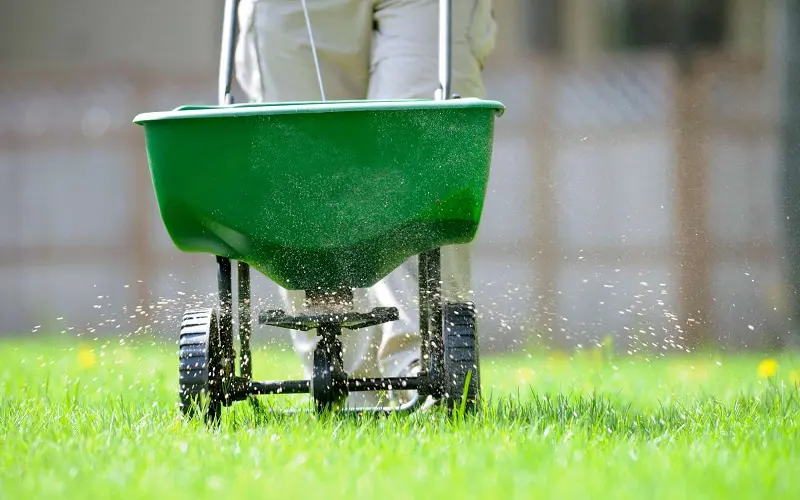
Image Source: greenandgrowlawncare.com
When choosing a fertilizer for your lawn, many people narrow it down to ironite or milorganite.
Both are excellent for getting your lawn healthy and looking great, but they have some essential differences that can help you determine which one you should use.
Ironite and milorganite are both designed to be applied to your lawn in the spring and fall, but other than that, they have quite a few differences.
Ironite comprises iron and micronutrients, while milorganite includes nitrogen, phosphorus, and potassium. It has a small number of micronutrients, but ironite tends to have more than milorganite.
Milorganite is also a slow-release fertilizer that is designed to feed a lawn for a longer period of time. Usually, when you apply milorganite, it will slowly feed your property for about ten weeks, depending on the amount you use and the brand you purchase.
Another critical thing to note about these two fertilizers is that Milorganite is a fully organic option, while Ironite isn’t. If you’re not sure which one you should choose for your lawn, here’s a general way to decide.
If you’re looking for a way to make your lawn look greener, then you should apply Ironite. For those looking to promote the overall health and growth of their lawn, Milorganite is the better option.
Should You Use Ironite?
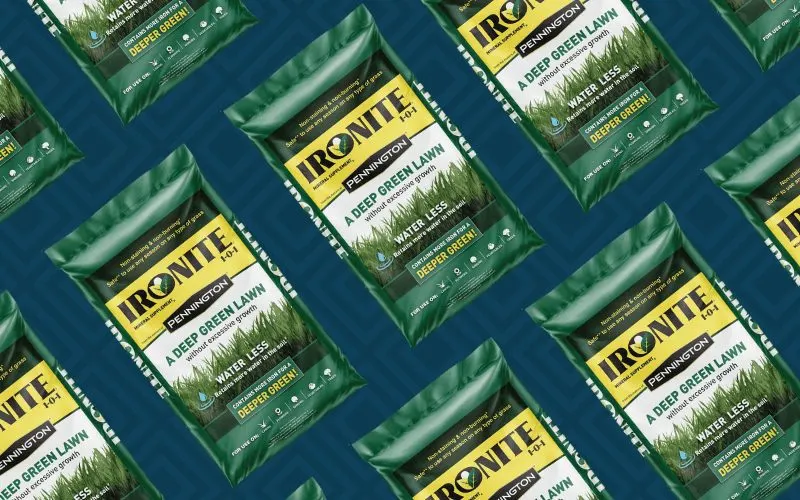
Ironite is a supplemental fertilizer meant to be mixed with other fertilizers. It has a high iron content and other micronutrients that help bring your lawn and gardens back to life.
There is no good reason not to use ironite because of its many benefits. However, if you have a ton of concrete around your lawn or gardens, it may be best to use something a little more organic.
If your lawn has low iron content, your quickest fix is to go with ironite. It’s easy to use, affordable, and packed with enough nutrients and minerals to help turn your lawn green again, and fast.
You can expect to see results in up to two weeks if your grass is yellow or orange. However, you may not notice any results if your grass is already lushly green.

